Extract from the HMB Rules for Buhurt
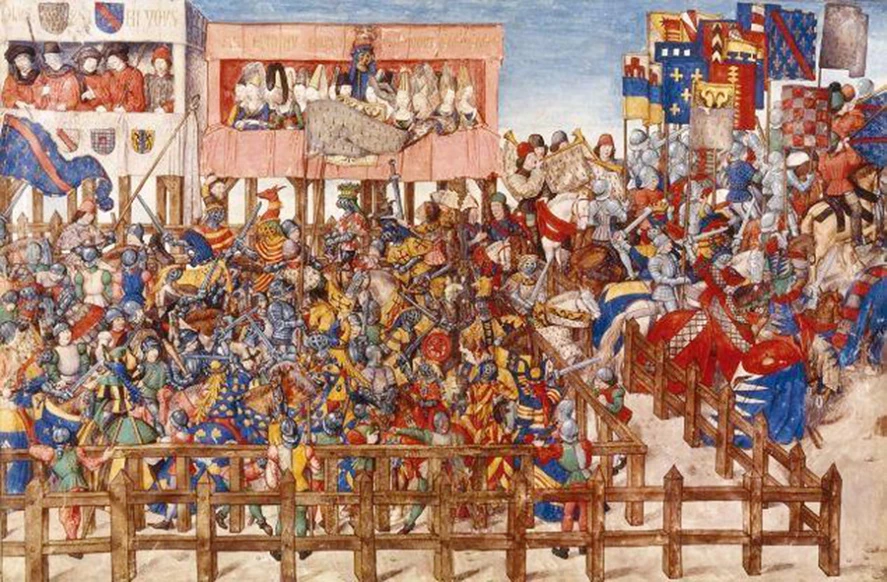
Contents
In the buhurt categories a fighter is “removed from the battle”, when:
1.5.1. He touches the surface of the lists with the third point of support
1.5.3. Element of protective equipment, used to protect joints, head, hands, groin, or neck, and also serves to protect a large area, broken or lost.
1.5.5. Continues attacking actions without a weapon in his hand (shield is not a weapon).
To get the admission to the HMB, a fighter has to:
1.6.3. Have a medical health certificate issued by a specialized medical institution, confirming that he has no restrictions to participate in the competitions.
1.6.5. Have an admission for arms and armor, provided by the Authenticity committee.
2. Authentic Equipment
2.2. A fighter has to rebate his weapons… Rebating is a process of rounding of the peak and the percussion edges of any bladed or pole weapon used in HMB competitions. The radius of rebating is about 10 mm.
2.2.1. The edges of all the striking parts of any weapon are to be rounded as a bevel and be not less than 2 mm thick.
2.2.2. The edges of shields are to be trimmed with thick (not less than 2-4 mm) leather or three or more layers of fabric attached with glue.
2.2.3. Edges of the iron shields have to be carefully forge-rolled and be no less than 4 mm thick The weight of any metal shield shall not exceed 5 kg.
2.4. list of allowed weapons, as well as technical requirements for them.
2.4.1.
- single-handed swords, sabers, broadswords: max. 1700 g
- falchions max. 1900 g
- long swords (total length is up to 1,400 mm), sabers, broadswords max. 2600 g
- two-handed bladed weapons of the XIV-XVIIth centuries, max. 3800 g
2.4.2.
- single-handed axes max. 1400 g; The length of a cutting part of an axe blade should not be less than 7cm!
- maces and six-flanged maces max. 1100 g; ONLY wooden handles and no sharp edges
- only thrust weapons are not admitted
2.6.1. The head has to be protected with a metal helmet … made of steel ST3 2 mm thick.
2.6.2. The helmet has to be equipped either with a well quilted padded cap (min. 5mm), or leather suspension, a “parachute” with a quilted padded cap (min. 3mm).
2.6.4. The body, legs and arms are to be covered with at least plate armor. The chainmail can be only used as an extra protection.
2.6.5. The body is to be protected with underarmor padding, which covers the whole torso.
2.6.12. The groin has be protected with armor elements or hidden protection (an athletic supporter for contact sports).
See the complete wording of the rules.


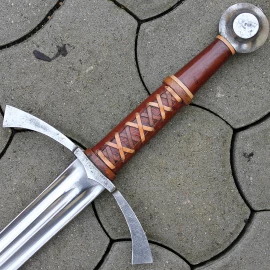
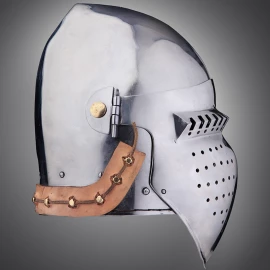
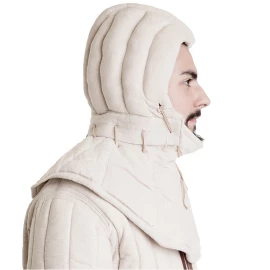
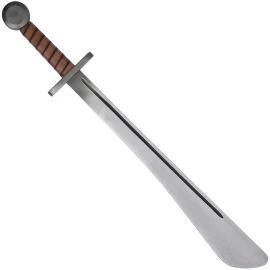
Comments (1)
Hello, I was wondering if any Plate Armor sets could be recommended for a beginner. Something that's as cost efficient as possible, but is still within regulation for combat. Thanks!